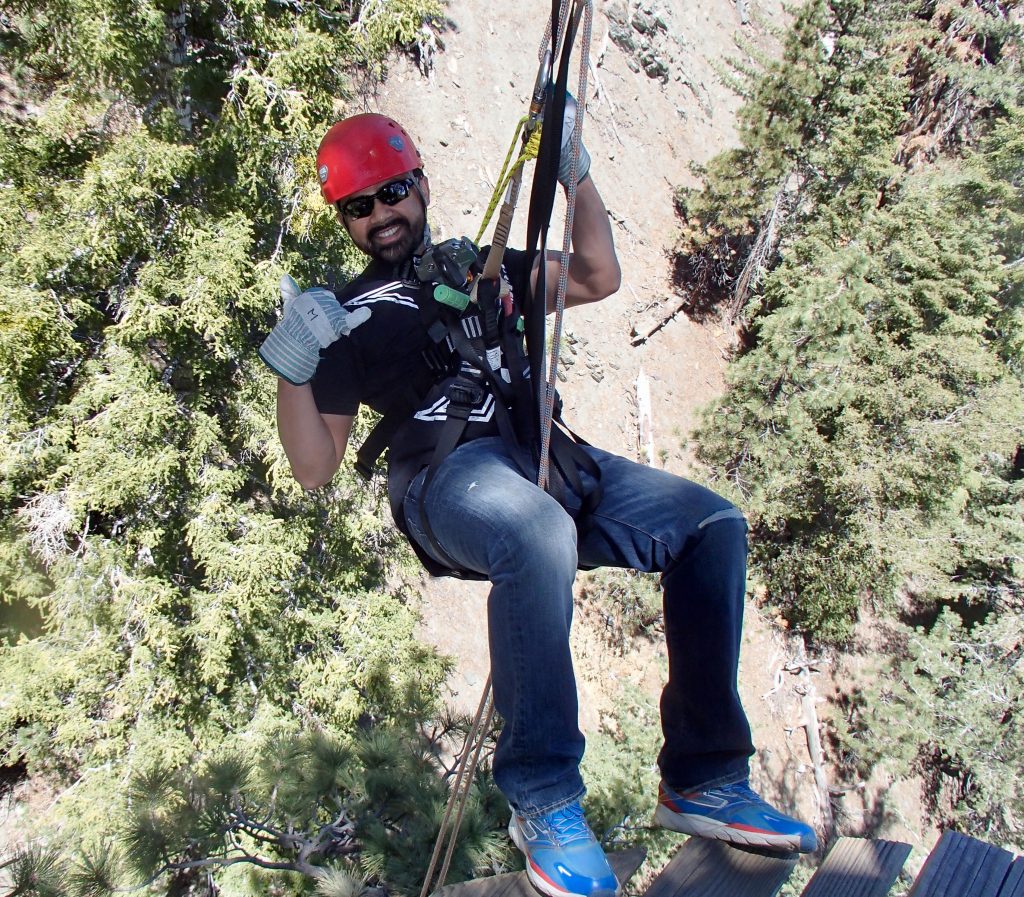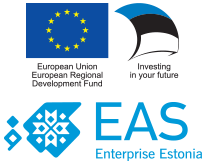Another Take on LBE – Shabeer Sinnalebbe of Synthesis VR

We can’t help coming back to LBE. Honestly it feels like the unofficial circulatory system of VR that just keeps on giving.
A couple weeks ago we had the pleasure of getting Will Stackable’s perspective on where the LBE market is developing and what VR devs should take away from it. Now we’ve been lucky enough to be allowed a glimpse into the workings of another LBE giant – Synthesis VR. The company’s CEO Shabeer Sinnalebbe really gets into the nitty gritty and provides some great insight on what we might expect to see in LBVR in 2019!
–––
Hi Shabeer, thanks for taking the time to chat! To get things started, can you tell us a bit about what your role at Synthesis VR is and how the company came to be?
Kamen [CTO of Synthesis VR] and I have known each other for a very long time. Both of us used to work in telecommunications but felt we needed a new challenge. It was late 2015 when we decided to take the plunge and explore VR. Our main goal was to build a comprehensive solution for LBEs, but there were not too many arcades or content providers around in early 2016. We opened a test arcade and started building our solution based on customer feedback. We tested Synthesis VR with other partnering arcades and went commercial in late spring 2017. Now we are in more than 90 LBVRs and burning more than a million and half minutes a month!
As far as what I do, my job title is CEO of Synthesis VR, but we all wear many hats and sometimes our roles are intertwined, but in most cases I deal with strategy, business administration and partner relations.
Being in touch with so many arcades and their everyday struggles, what do you think is the number one concern for LBVR centres today?
It’s hard to pinpoint just one, but some recurring themes are how to reduce operational expenses, attracting customers during weekdays and increasing customer retention.
Has this changed since you first started to build the platform in 2016?
Yes, a lot has changed since 2016. The arcades and developers are far more educated about the industry, but the industry is still maturing and growing organically in various directions. I think a pattern and more concrete standards will emerge soon.
When you look back at 2018, do you see any trends or shifts in how arcades operate and their role on the market?
LBVR arcades and LBEs embracing VR are playing a huge role since home user adoption is not where everyone expected it to be. Hardware manufacturers and developers are targeting arcades, businesses and enterprise. We also see many larger FECs and LBEs embracing the VR market and experimenting with VR. The trend is slowly shifting from small scale or mini VR arcades to larger LBVR locations and theme parks. Of course, all of this will take time.
Synthesis VR has seen a lot of games come and go. What would you say are the main qualities a game should have to be a great fit for LBVR centres?
Most people coming to arcades are first-time customers and come from a variety of age groups. It is also important to note that VR is being embraced by gamers and non-gamers alike. The first step is to keep this varied audience in mind and to create games that are easy to learn and don’t have overly complicated controls. Interactive and fun gameplay is the next. One of the main reasons behind Job Simulator’s success is that the player can interact with all of the objects and express themselves without any restraints. Rewarding the player by having scoreboards or in-game tokens and promotions is also important.
It is crucial to know your audience before you create a game. You can have a complicated fast-delivering game and still be successful if you are catering to an experienced gaming audience, but creating a game for kids and making it complicated will not work. Having multiplayer definitely helps with customer retention and attracting groups. However, a single player game with compelling but uncomplicated gameplay and a rewarding story also works great for arcades.
Is there anything a game should definitely avoid when it comes to LBVR? Any deal breakers?
Arcades prefer games that are easy to learn and play. Complicated tutorials and a high learning curve require dedicated employees and waste the customer’s time. Having multiple employees is expensive and having to guide the customers on each and every step of the game is counterproductive.
Motion sickness and nausea are also definite deal breakers. Most people coming to arcades have not tried VR before and can be from any age group, so motion sickness is a big no-no.
Great content (games, experiences) is not the only thing successful arcades offer. In your experience, what should arcade operators consider adding to their locations to draw in more crowds?
VR is an expensive endeavour for customers, especially families. Creating events and membership programmes helps. Board games and drinks and snacks get customers to spend more time at the arcade and this translates into customers spending more by playing VR. Catering to corporate clients and birthday parties helps spread the word as well; plus corporate clients are a nice way to balance the arcade’s slow weekday traffic.
The ideal customer is the one that keeps coming back to the arcade and brings friends. Are there any tips or advice you can give to arcade operators to increase visitor retention?
Even if you have the best game or location, having bad customer service will always damage retention. Creating a safe and fun environment for all visitors is very important. Once a proper atmosphere has been established, it’s up to the staff to sell the experiences and recommend games based on the customer’s preferences. It’s great to have different experiences for different types of customers as more experienced gamers might want to try a more advanced game. It’s natural to help the customers during gameplay and make sure everyone is having a good time and feels safe – always check that the wires are not tangled!
There are different factors to take into account when running an arcade and I’m sure the visitor numbers fluctuate a lot. Do you see any low and high times when analysing your data from arcades from around the world (e.g. during holidays, the school hours, etc.)?
The start of the school year tends to be slow on the North American market. The summer, holidays and weekends are the busiest. The days that fall immediately before big holidays like Thanksgiving and Christmas tend to be slow, but the following vacation days often get busy. We have a few arcades in South America and Asia that do very well all year round due to foot traffic. The fact that VR is such a new industry and the lack of other forms of entertainment attracts a lot of customers. Planning events, tournaments and cross-promotions with other local businesses helps arcades stay profitable during low times.
And how much do you think those fluctuations in foot traffic are dependent on the physical locations of the arcades?
The location is still an important factor in generating foot traffic in Asia, Africa and South America. However, this is not the case in North America and Europe, where a good online presence is just as if not more important.
How do you see the LBVR market changing in the next 12 months?
The market is shifting from traditional room-scale experiences to larger venues with multiple VR attractions and theme parks dedicated to VR. This process will obviously take some time but the trend mimics what happened to movie theatres, where multiplexes have mostly replaced traditional cinema houses. It’s important for arcades to offer experiences that cannot be replicated at home – these are the arcades that have a higher chance of success in the future.
What plans does Synthesis VR have in the coming months? Any new features the developers and arcades can look forward to?
Big things are ahead! We are working on better support for certain new business models and we are close to introducing our own content delivery platform. We aim to offer the simplest yet most functional and rich platform on the market. As we are the only platform introducing major new functionalities every few months, our administration process takes a few days. This will be simplified and brand new launcher options will be introduced. One size doesn’t fit all and we have to help our customers enrich their businesses in the best way possible – so you’ll be seeing more optimization, simplification and lots of customization.
How much of a gamer are you? Do you try out all the games that join the platform or do you mainly play certain favourites?
I wouldn’t call myself an avid gamer. I’m just someone who really loves tech and trying out new experiences. I have my favourites, but I also try to check out as many new games as I can!
And lastly, what’s your weapon of choice in Skyfront and why?
The Pineapple – two hits is all you need to take someone down!
–––
Sandra Müür – Community Manager at Skyfront VR


Stay Connected